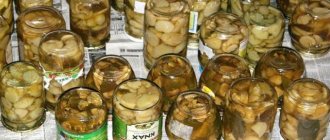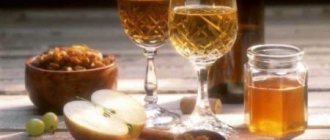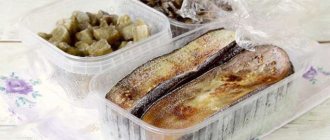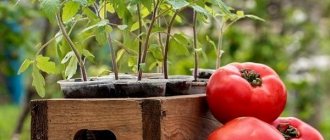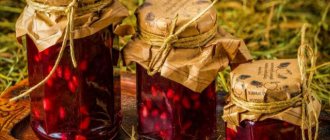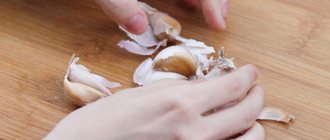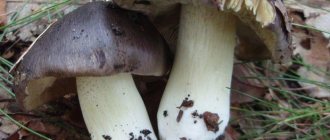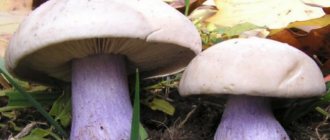Is it possible to pickle mushrooms?
The most common edible representatives of this family are sunflowers, violet, goose or two-colored, giant rows or pigworts, and May rows.
Mushrooms are delicious both freshly prepared and canned. However, it is worth remembering that pickling rows at home is possible only after prolonged soaking and deep heat treatment. And if you approach the process carefully, thoroughly wash and prepare the raw materials, process the jars, then pickled row mushrooms will become a tasty addition to the winter table.
How to deliciously pickle rows at home using the hot method
In Russian cuisine, there is a delicious recipe for hot salting rows. This method will make the fruiting bodies piquant and crispy. The appetizer can be used as an additional ingredient for preparing salads.
- 3 kg rows;
- 2 liters of water;
- 5-8 cloves of garlic;
- 3 tbsp. l. salt;
- Vegetable oil;
- 3 dill umbrellas and 1 tbsp. l. dill seeds
A step-by-step description of the process will tell you how to deliciously pickle rows at home using a hot method.
- Prepare fruit bodies for boiling: peel, wash and drain.
- Boil the mushrooms in salted water over medium heat for 30 minutes, skimming off any foam that has formed.
- Peel the garlic, cut into thin slices and mix with chopped umbrellas and dill seeds.
- Place the rows in glass containers, sprinkle with garlic, dill and salt.
- Press down so that there are no voids, pour 5 tbsp into each jar. l. calcined vegetable oil.
- Cover with nylon lids, leave to cool and then lower into the basement.
Preparing rows for pickling
First of all, after harvesting, the mushrooms must be cleared of any remaining soil, grass and foliage, and the lower part of the stem must be cut off, since it is not suitable for food. Next, just follow a simple algorithm:
- Rinse the row thoroughly under running water and sort by size. Small mushrooms can be harvested whole, large ones should be cut into several parts.
- After sorting, the mushrooms must be placed in a container, filled with cold water and left to soak in a dark, cool place. Depending on the type, soaking can last from 3 hours to 3 days. So, for example, floodplains are soaked for 2-3 days, but it is enough to keep bluelegs in water for 3-5 hours. The water must be changed every 2 hours.
- After soaking, the rows are washed again under running water, cleaned, the skin is removed from the cap and carefully checked again to ensure that there is no soil or pine needles left anywhere.
- The washed and peeled mushrooms are poured with filtered water, salt is added at the rate of 1 tsp. 1 liter of water and put on fire. It is necessary to cook for at least half an hour, be sure to remove the foam.
When all the mushrooms in the pan have sunk to the bottom, they can be removed from the heat. Drain the broth and rinse again with water. Allow excess liquid to drain freely.
How to deliciously fry rows of mushrooms to prepare mushrooms for the winter
How to deliciously fry row mushrooms so that in winter you can use the resulting semi-finished product and prepare delicious dishes for the whole family?
- 3 kg rows;
- Refined vegetable oil - for frying;
- Salt - to taste;
- 2 tsp. ground black pepper;
- 4 cloves of garlic.
A step-by-step description of the process will show you how to deliciously fry rows for the winter. The preparation can be used for soups, fried potatoes and even as an independent dish.
- Wash the rows, cut off the ends of the legs and boil in salted water for 30 minutes.
- Pour enough oil into a heated frying pan so that the mushrooms practically float in it.
- First fry over medium heat, then turn the heat to low and fry for 40 minutes.
- At the end, salt well so that you can feel the salt, add ground pepper and chopped garlic.
- Stir and continue cooking for another 15 minutes.
- Distribute into jars, add oil from the frying pan and close with tight nylon lids.
- Take it to the basement or put it in the refrigerator for storage.
How to marinate rows
Before marinating peeled and boiled row mushrooms, you should sterilize the jars and lids, and also prepare the marinade.
Depending on the recipe, the composition may include both a minimal amount of ingredients (water, vinegar, salt, sugar and spices) and specific components, such as tomato paste or lemon zest.
Warning! When collecting rows, it is worth considering that the distinctive feature of edible species is the pleasant smell and color of the cap. If it is white, without the slightest tint, it is a poisonous mushroom.
Delicious pickled rows with mustard seeds
There is another delicious recipe for pickling edible row mushrooms - with mustard seeds. This dish is an excellent addition to salads to diversify the family’s daily menu.
- 3 kg rows;
- 1.5 liters of water;
- 2.5 tbsp. l. salt;
- 3 tbsp. l. Sahara;
- 2 tbsp. l. mustard seeds;
- 4 things. bay leaves;
- 5 black peppercorns;
- 3 tbsp. l. vinegar 9%;
- 5 cloves of garlic.
You can learn how to deliciously marinate row mushrooms for the winter with mustard seeds from the step-by-step description of the recipe.
- Peel the fruiting bodies, rinse well, cut off the ends of the stems and place in boiling water.
- After boiling, boil for 25 minutes, but do not forget to constantly remove the foam from the surface.
- Drain the water completely and prepare the marinade: dissolve sugar and salt in water, stir and bring to a boil.
- Add bay leaves, peppercorns and mustard seeds.
- Mix well, add mushrooms and cook over low heat for 20 minutes.
- In 7 minutes Before the end of the specified time, add diced garlic and pour in vinegar.
- Place into prepared glass containers, close with lids and cover on top.
- Let cool and take to a cool room or leave in the refrigerator.
Rows: what a mushroom picker should know
Fans of “quiet” mushroom hunting should know what these mushrooms look like, so as not to accidentally send a toxic forest dweller to the basket. Indeed, of the wide variety of varieties among tricholomas, there are also poisonous specimens.
Which rows are good for food?
It is difficult for inexperienced citizens to visually distinguish an edible row from a poisonous one.
You should find out what safe mushrooms common in our regions look like:
| Type | hat | Trunk-leg | Structure |
| Good to eat | |||
| Gray | Silvery, dense up to 10-12 cm, conical shape (in young fruits) and flattened (in mature ones), irregularities are noted around the circumference | Whitish or gray, 10-16 cm long, yellowish in color at the break, there is a coating | Fibrous, barely noticeable mealy aroma |
| Lilac-footed (bluefoot) | Creamy yellow with a lilac tint, diameter up to 15 cm | Low, bright purple, sometimes light with purple streaks | Dense, elastic, thick |
| Mayskaya | The appearance of a hemisphere in young fruits, in old ones it is flattened and convex up to 8-10 cm, the color is yellow | Thickness up to 3 cm, length up to 6-7 cm (expands near the soil) | Snow-white, very dense |
| Shoed | Brown and silky to the touch, 6-20 cm in diameter (covered with cracks in adult fruits) | Strong, up to 2.5 cm thick, 5-20 cm long, whitish near the cap and brownish at the base | Snow-white with a pronounced pine scent |
| Green (greenfinch) | Green-yellow tint (color intensifies with age), diameter 5-15 cm, there are small cracks | About 6 cm long, same tone with cap | Ocher or white, elastic with a faint cucumber odor |
| Conditionally edible, distinguished by bitterness (you should take young fruits for eating) | |||
| Purple | Diameter up to 10-15 cm bright purple, spherical in juveniles, flat in adults | Up to 7-8 cm long, tough, lighter in color than the cap | Very dense and meaty |
| Earthy gray | In the form of a cone up to 8-9 cm in diameter, brown in color, silky | White, up to 8 cm long, hollow and yellowish at the base in old fruits | Elastic, has a mild mealy aroma |
| Poplar | Uneven, brownish in color with cracked edges | Cylindrical, up to 3 cm in volume | White, fleshy and dense |
| Red-yellow | Diameter up to 15 cm, reddish-orange or yellow with small scales | Cylinder type, up to 10 cm long, color similar to the cap | Snow-white with a mealy aroma |
The main distinguishing feature of the poisonous row is the color of the cap. In toxic rows it is white without any other shade.
Lilac-legged row.
Where do they grow
Favorite habitats of row trees are coniferous, pine or mixed forest belts. In some regions they are called “pine pine trees” or “cyaniums”. You can also see them in city parks and rural pastures.
When is it allowed to collect
The rows grow already in mid-May, but it is advisable to collect them from the first days of August to the end of October. During this period, the rows are especially fleshy, pleasant and appetizing. Their peak ripening occurs at the end of September.
Expert opinion
Melnikov Vladimir Mikhailovich
Knows 1000 ways to cook, pickle and marinate any types of mushrooms
In order not to make a mistake when collecting trichol, know that the pulp of poisonous fruits changes color in the air (when broken).
Classic marinating option
The recipe is quick and easy. It doesn't require any effort, but the taste is unusual. The love for the snack manifests itself after trying one mushroom. Let's look at how to prepare a gray row:
Products:
- fresh mushrooms - 2 kg;
- granulated sugar - 50 g;
- table salt - 120 g;
- table vinegar - 200 ml;
- bay leaf - 4 leaves;
- black peppercorns - 10 pcs.;
- cloves - 4 inflorescences;
- garlic - 4 cloves;
- dill umbrellas - 4 pcs.;
- currant leaves - 2 pcs.
Preparation procedure:
- Carefully sort the main ingredient, remove spoiled and wormy ones. You need to taste the stem on your tongue and, if you feel the taste of bitterness, soak the mushrooms in very cold water for 2-3 days with the obligatory change of water at least 3 times a day. Rinse under water, place in a colander and rinse with boiling water.
- Place the prepared rows in a saucepan and fill with filtered liquid. Add salt and granulated sugar and place on the stove. After boiling, cook for 25 minutes. During cooking, it is necessary to remove the foam. The transparency of the marinade will depend on this action. Drain in a colander and leave the broth in the container.
- Wash the jars with soap and dry in the oven.
- Peel the garlic, wash and chop into slices. Pour boiling water over dill inflorescences and currant leaves.
- Place 1/2 of the prepared spices on the bottom of the containers, including peppercorns and cloves. After that, distribute the mushrooms, and on top of them the remaining seasonings, pour in the acid.
- Bring the mushroom broth to a boil, fill the jars with the contents and seal tightly. Turn over, cool and store in the cellar.
Gray row
Botanical description of the mushroom
Bluefoot (two-colored row (lilac-legged), blue root, Lepista personata) is a conditionally edible mushroom from the row family. It is easy to recognize by its characteristic color and other distinctive features:
- A flat-convex cap of a light yellow, slightly purple hue. Its average diameter reaches 10 cm, but there are also giant mushrooms with a cap up to 25 cm in diameter. Its surface is smooth;
- At the bottom of the cap there are plates, yellowish-cream in color;
- The leg is slightly thickened at the base, with a smooth surface. Its length is usually no more than 10 cm, thickness is about 3 cm. In young specimens, remnants of the “spread” in the form of flakes are visible on the stem and a fibrous structure is noticeable. The color is bright, lilac or gray-violet, sometimes with a bluish tint.
The main characteristic of the bluefoot is its bright colors. This scares away mushroom pickers. But the nutritional properties are good. It has a pleasant taste, somewhat similar to champignon.
False mushrooms: inedible and poisonous
Particular care should be taken when collecting purple-legged row, so as not to accidentally or in a hurry collect mushrooms that are dangerous for consumption into the basket. Even a small piece used as food can cause poisoning of the body, disruption of the gastrointestinal tract and intoxication of the body.
- No. 1 - Goat's web
Repels mushroom pickers with an unpleasant odor comparable to the process of decay. There is not even a hint of fruity notes in the aroma that distinguish edible rows.
- No. 2 - White-purple cobweb
A distinctive feature remains the red inclusions on the main shades of the stem, raising doubts about edibility even among novice mushroom pickers.
Pickled bluelegs: step-by-step recipe
The mushrooms are popularly nicknamed bluelegs, although in fact they have spruce or purple legs, depending on the subspecies growing in the area. You can marinate this mushroom according to the usual recipe, but there are still some differences from the standard procedure.
Take the following ingredients:
- Three kilograms of bluelegs;
- Allspice;
- One and a half tablespoons of salt (as each person decides to taste);
- Lemon acid;
- Hot pepper;
- Garlic.
Traditionally, rinse the product from dirt and start cooking.
- Peel the garlic, then chop it along with the eggplant;
- It is important to cut mushrooms not into large pieces, but into medium pieces;
- Pour the mushrooms into a prepared bowl and fill with water;
- Bluelegs are cooked for about half an hour;
- It is important to rinse the mushrooms under running water after cooking;
- Now return the mushrooms to the bowl, add pepper and salt to taste;
- At the end of cooking, add citric acid and allspice;
- Cook for another half hour.
This completes the main preparation. All that remains is to close the rows in the jars.
Features of storing workpieces
A prerequisite for high-quality storage of pickled rows is compliance with a special temperature regime, which should not exceed 8°C or fall below zero. The snack will be considered ready a month after twisting.
In addition, it is recommended to avoid exposing the jars to direct sunlight, which can easily provoke fermentation processes. Swollen lids or the appearance of white mold indicate the beginning of deterioration of the product, which can still be saved in the first few days after such changes.
Remember!
Mushrooms sealed in glass containers with iron lids should not be stored for longer than a year. If you use glass lids, the shelf life can be extended for another six months.
Rowers belong to mushrooms of the 4th category of edibility. They can be fried, stewed with vegetables or meat, prepared into pates, caviar or pie filling, pickled and salted for the winter.
Why are rows useful?
1-Ryadovka gray 2-Ryadovka May
These mushrooms belong to dietary products. In their composition, experts have identified a lot of useful micro- and macroelements, polysaccharides, vitamins and flavonoids.
Rows have many advantages, here are just a few of them:
- They have a positive effect on the functioning of the gastrointestinal tract, restore hepatocides (liver cells).
- Removes toxins and harmful substances from the body.
- Helps increase immune strength.
- They have high anti-inflammatory and antiviral properties.
Rowlings are especially recommended to be included in the diet of people suffering from rheumatism, diabetes and osteoporosis.
Shod row
Canning rows (video)
Preparing rows of mushrooms is not much different from traditional pickling of mushrooms. Even a novice housewife can cope if she follows the necessary instructions and follows proven recipes. First, try traditional cooking methods. The taste of these mushrooms is quite unusual, so before making large supplies, you need to understand whether this mushroom is suitable for consumption by you and your loved ones. Always be careful when handling mushrooms for cooking and do not risk your health by eating suspicious specimens.
